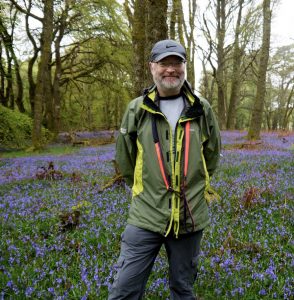Not finished yet
6.99 miles 3h 35m ascent 287m
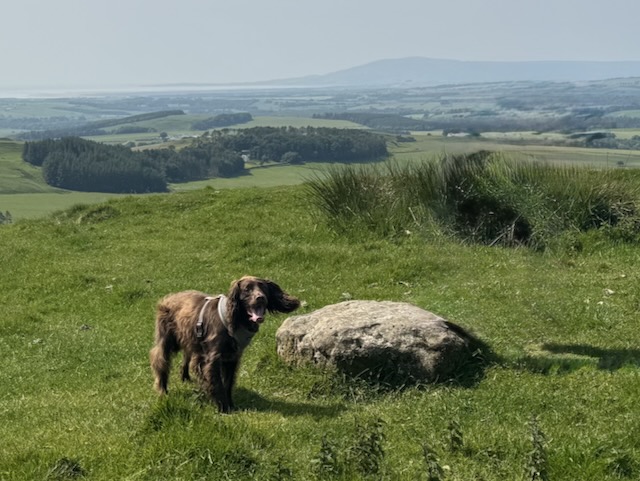
It was a simple enough route, minor roads from Ecclefechan to Burnswark, up the hill, then back again. But ……
A world unfurls, if you but look,
Beyond the grand, beyond the book.
A dewdrop clinging, clear and bright,
Reflecting sun, a tiny light.
The spider’s silk, a silver thread,
Across the garden, softly spread.
A whispered hum, a busy bee,
Lost in the heart of calendula’s glee.
The bark’s deep lines, a map untold,
Of seasons past, of stories old.
A pebble’s hue, a mossy sigh,
Small wonders dancing in the eye.
In these small truths, a richness found,
The quiet beauty all around.
A deeper peace, a gentle art,
To see the world, piece by subtle part.
…. the real experience is in the details.
It was a glorious day. My arms covered by sun-creme rather than sleeves, we walked in Summer’s weather, while Spring’s work still filled the hedgerows. Despite seeing Burnswark’s distinctive flat top on many walks while a few miles away, we could not see the hill for the first half hour of this walk.
We found a spot to park opposite “The Arched House” in Ecclefechan. This house, which carries the inscription, “Birthplace of Carlyle, 4 Dec 1795”, is now a museum in the care of the National Trust for Scotland.
Ecclefechan is a small town, perhaps more akin to a large village. It would once have been a key stop on the Carlisle-Glasgow road and the Ecclefechan Hotel, which we would visit later, was originally a coaching inn. Today’s turnpikes, the motorway and railway run parallel to the old road but by-pass the town changing it from a traveller’s halt to sleepy hollow. The town’s name is source of many a jape, “I missed the ‘fechan bus” etc. though its origin is the Brittonic eglwys fechan, small church.
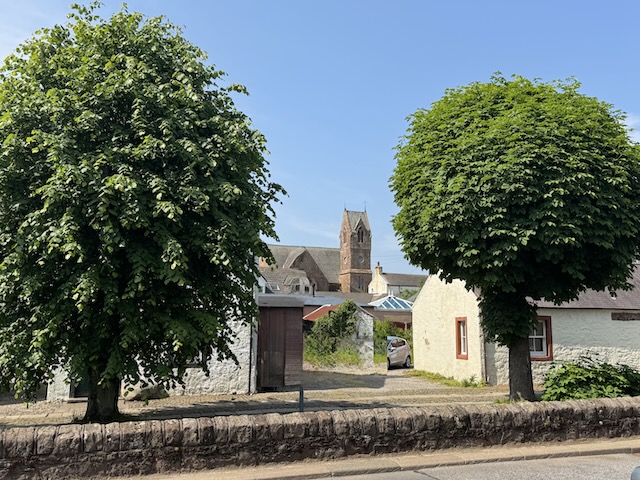
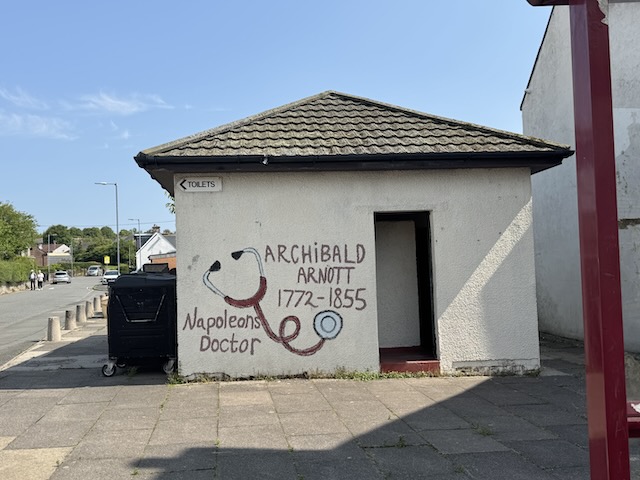
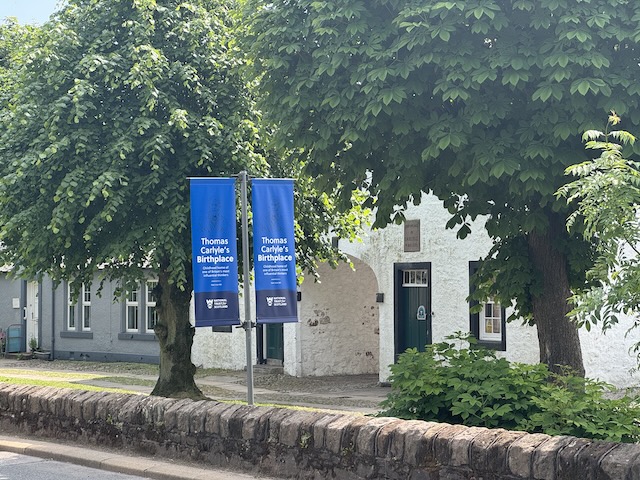
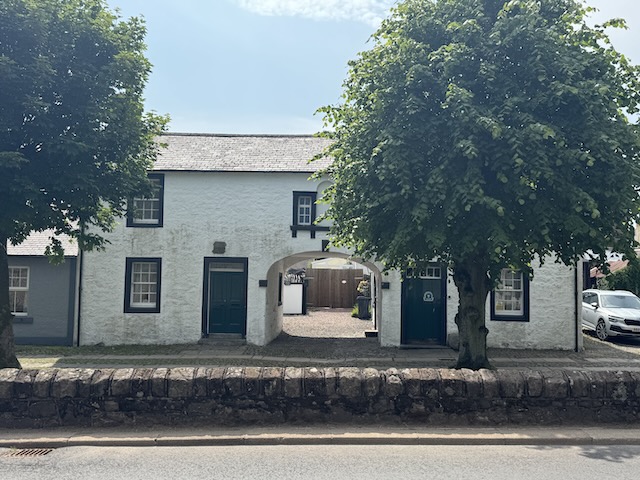
Thomas Carlyle is the town’s most famous son. A writer, historian and philosopher, he was world renowned in his day and known as the “sage of Chelsea”. He famously walked to Edinburgh, a hundred miles away, at the age of 13 to study at the University. His writings popularised the “Great Man theory” of history which is now regarded as overly simplistic but still has momentum in some leadership teachings. The internet throws up a great many wise quotations from the sage but the simplicity of this verse from his poem “Today”was one that made me think.
Here hath been dawning
Another blue Day:
Think wilt thou let it
Slip useless away.
He died in 1881 having uttered his final words “So this is Death—well …”. His fame was such that he was offered a burial in Westminster Abbey but declined this in his will. He is buried instead in Ecclefechan churchyard.
An information board at what must once have been a crossroads, had a map showing places of interest in Ecclefechan and a few lines from Burn’s “The lass o’ Ecclefechan”.
Gat ye me, 0 gat ye me,
O gat ye me wi naething?
Rock an reel, and spinning wheel,
A mickle quarter basin:
Bye attour my Gutcher has,
A heich house and a laich ane,
A’ forbye my bonie sel,
The toss o’ Ecclefechan
Which left me none the wiser.
Behind the information board, the town’s public toilets are graffited with the names of other Ecclefechan notables: Archibald Arnott, Napoleon’s physician; and Janet Little, the Scotch Milkmaid, a poet and contemporary of Robert Burns. Her poems aren’t really my cup of tea but “From Snipe, A Favourite Dog, To His Master” reminded me of Burn’s “Twa dogs”.
Langlands Road would once have been a direct route to Burnswark but the A74(M) but now a footbridge is the only way across.
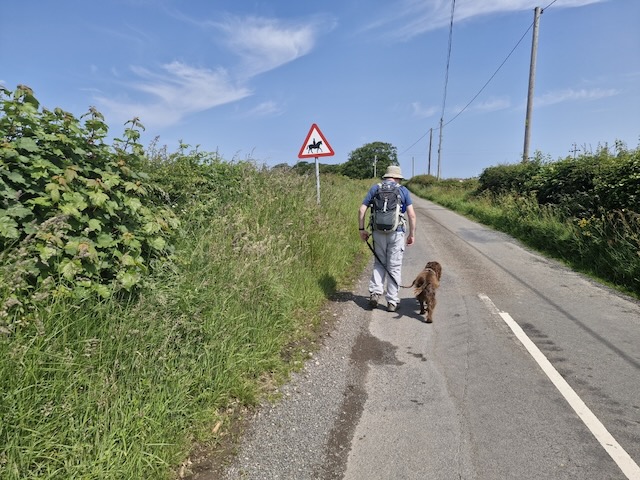
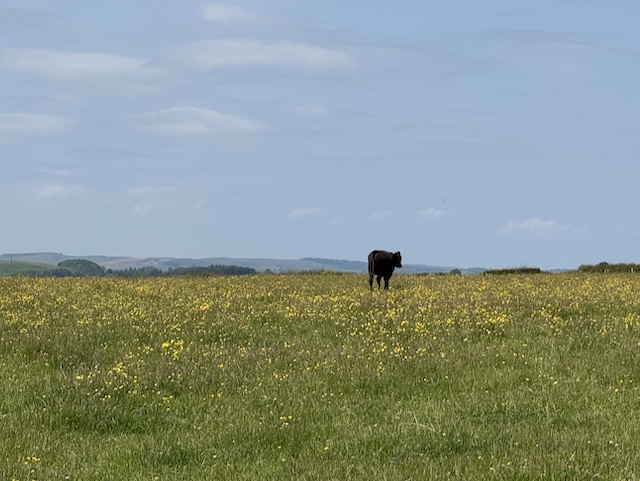
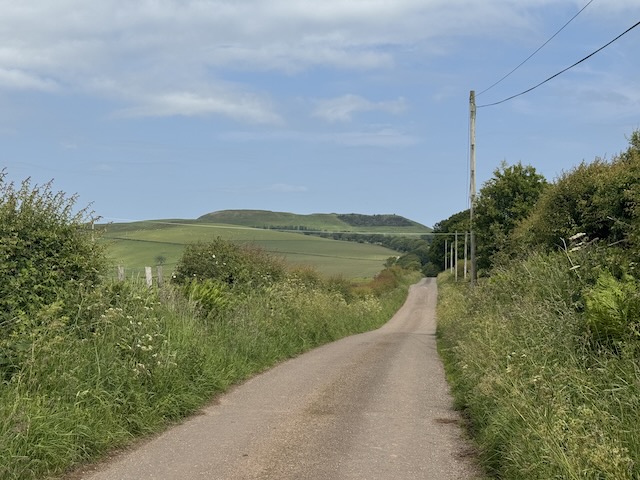
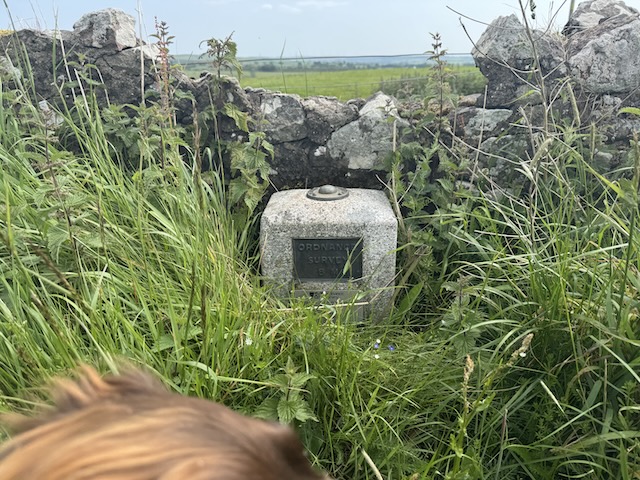
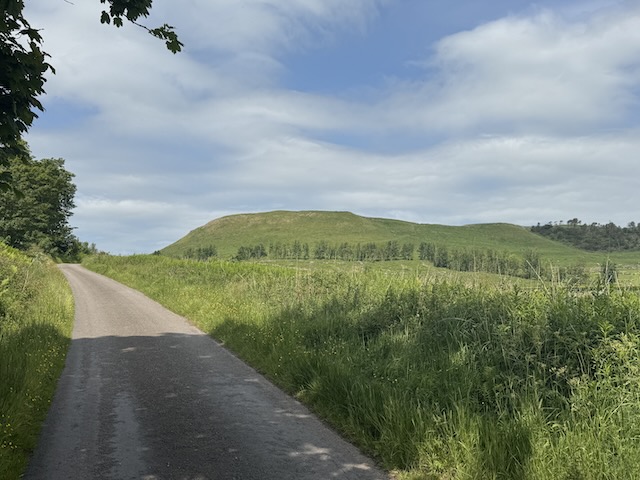
Burnswark Hill was still hidden from sight as we took up the road again on the far side of the motorway. We crossed the railway then continued up a minor road. There were only a couple of vehicles though signs did warn of horses. This was a gentle climb uphill up to the radio aerial on Clint hill.
Beehives, views of Criffel and the Solway, fields of buttercups, a bull by the road, OS GPS marker. Then downhill past Axletreewell to Relief, both rather unusual names.
Burnswark Hill. Just shy of a thousand feet. A Roman fort and before that a hill fort of the
O’er Criffel hill, he loudly roar’d,
O’er Burnswark hill, he wildly snor’d;
Through entries blew wi’ sic a birl,
Baith ricks and houses he did tirl;
Susannah Hawkins – Address to Satan
Kirkconnel Hall Hotel, “a good place to sop for coffee”. Closed. Indeed its closed-ness looked rather longstanding. We almost didn’t find Kirkconnel Tower, a ruined 15th century tower house.
Elizabeth I of England sent a force under Lord Scrope into Dumfriesshire in 1570 to destroy the houses of those who had supported her cousin, Mary. The town of Ecclefechan was burned and the estates of Lord Herries, Lord Maxwell and Murray of Cockpool were singled out for special treatment, they having been deemed to be particularly sympathetic to Mary. Whether or not the tower suffered the same fate is unclear. Stravaiging around Scotland. May have been a victim of the feuding between the “river” families in the area.

